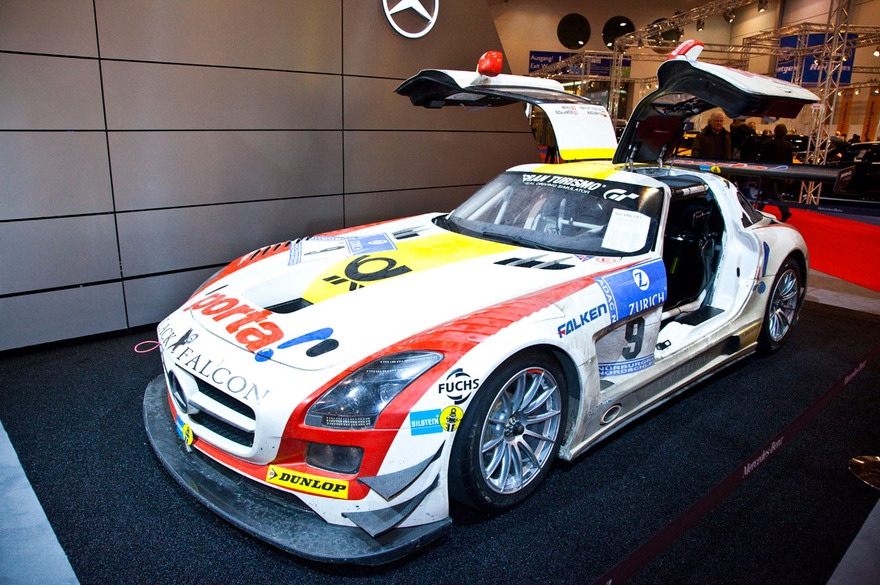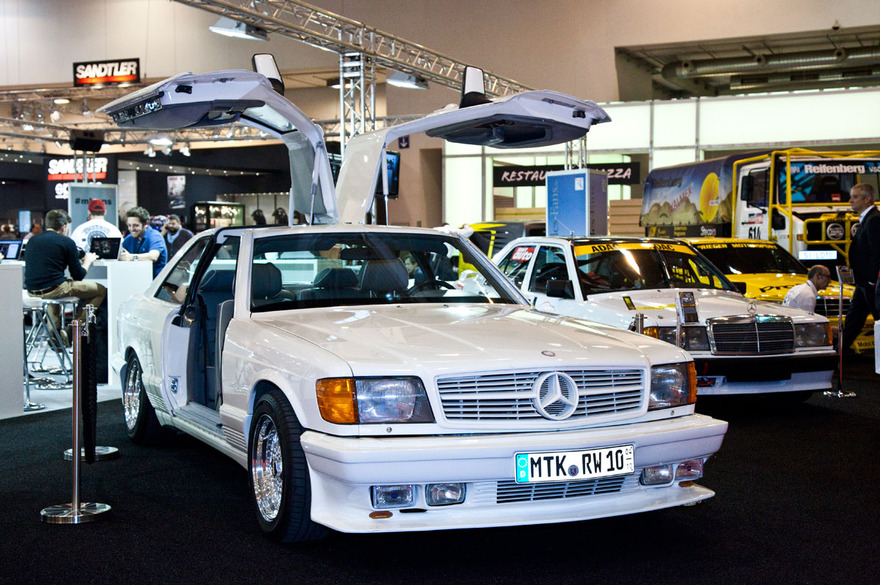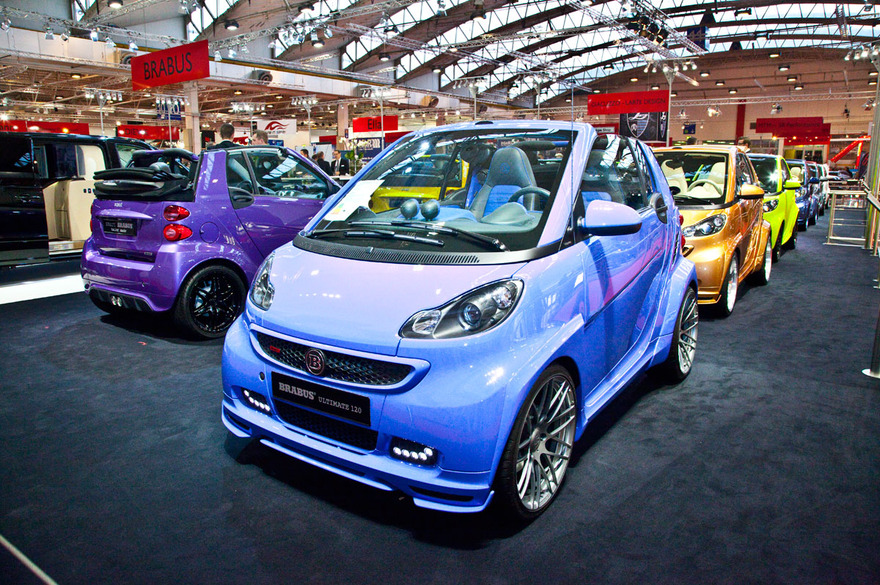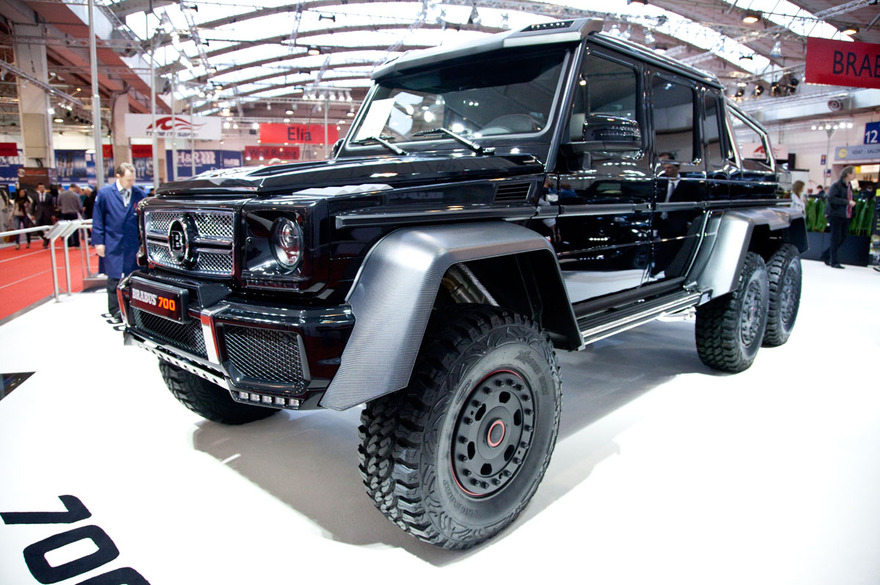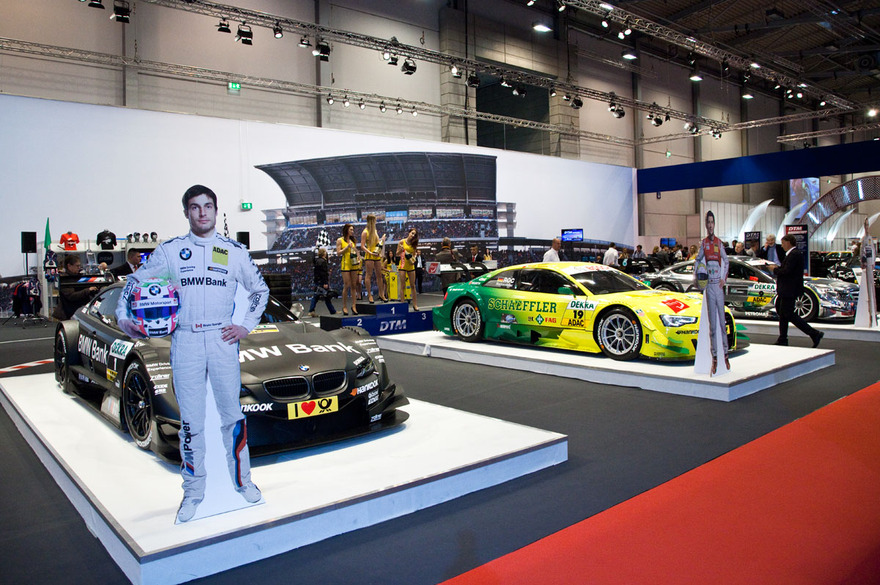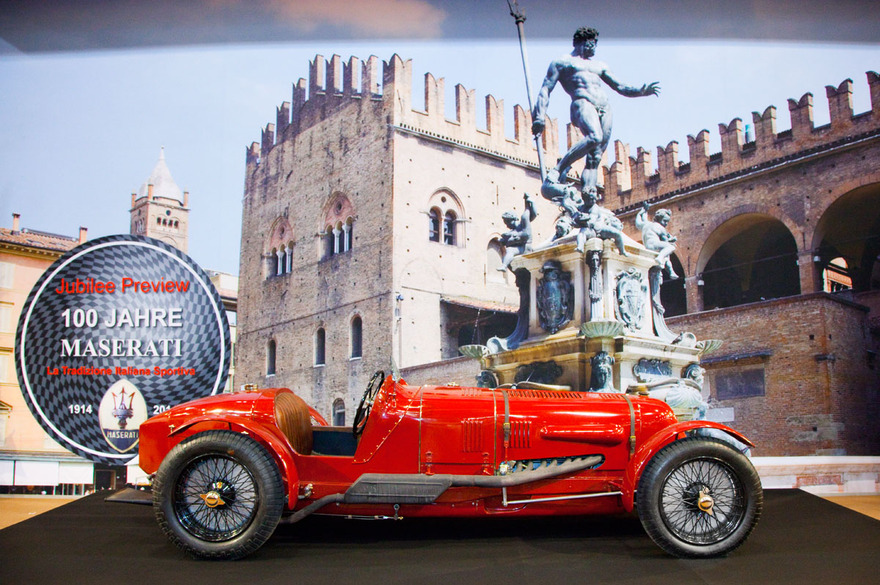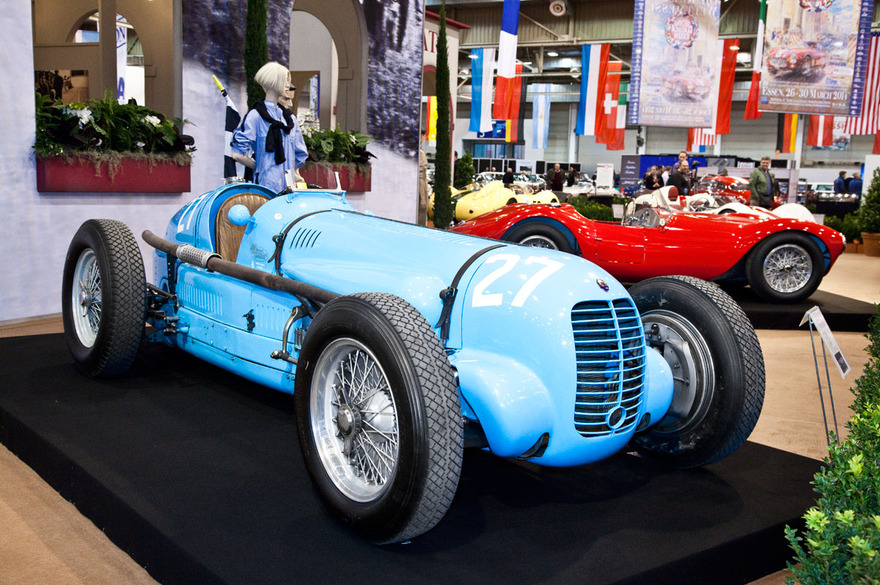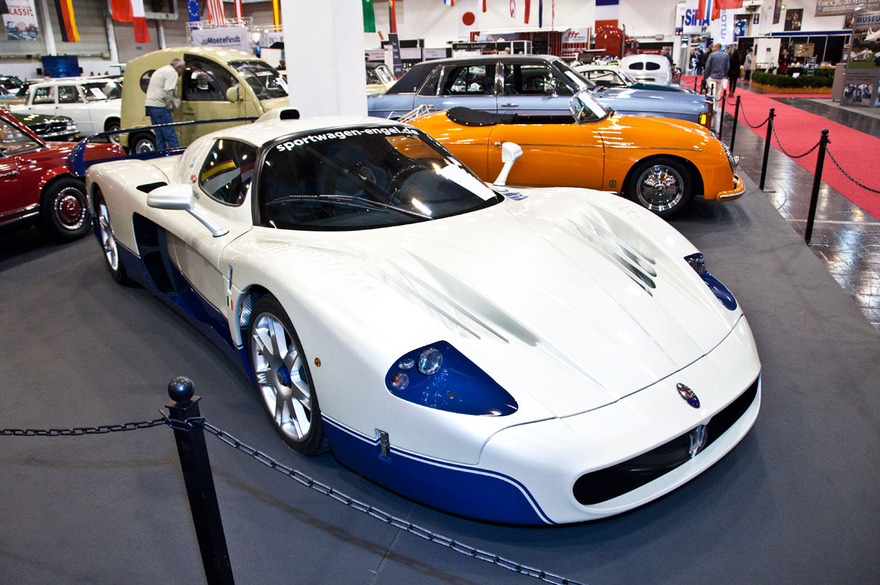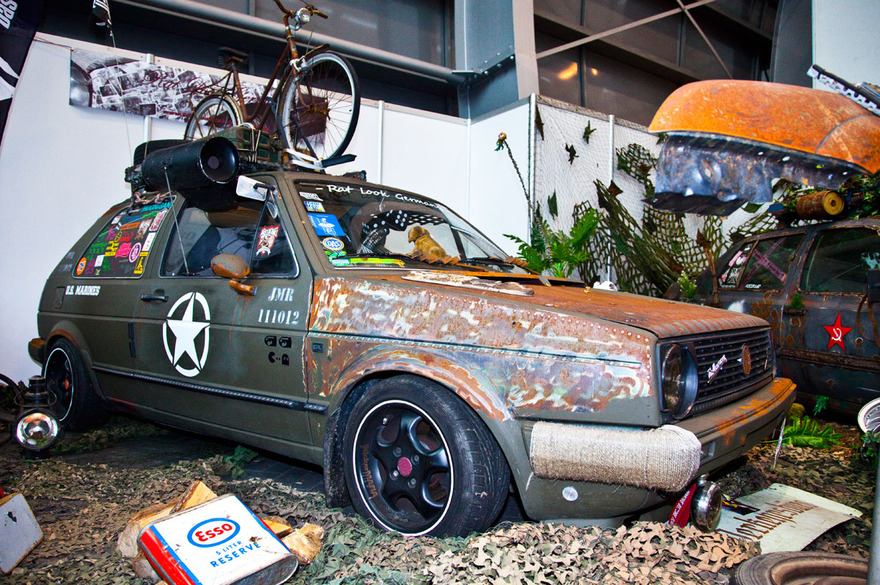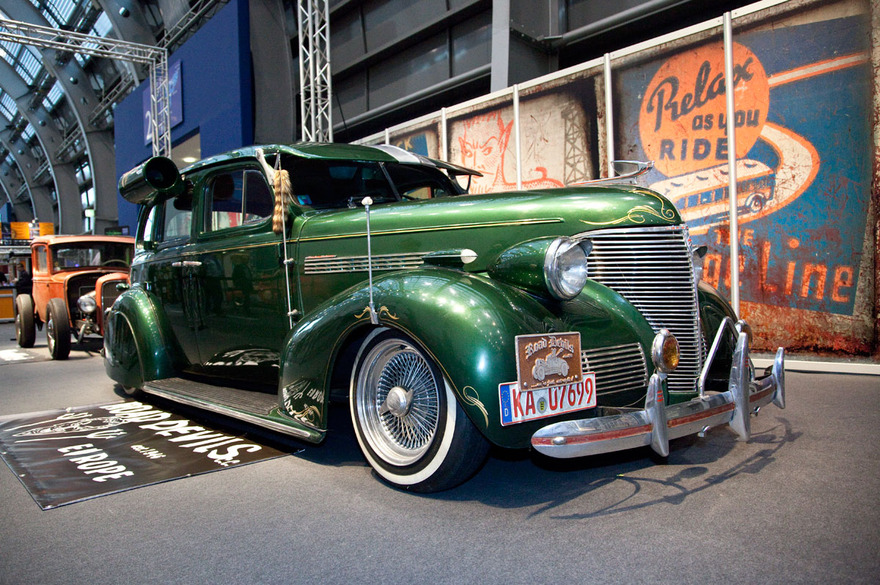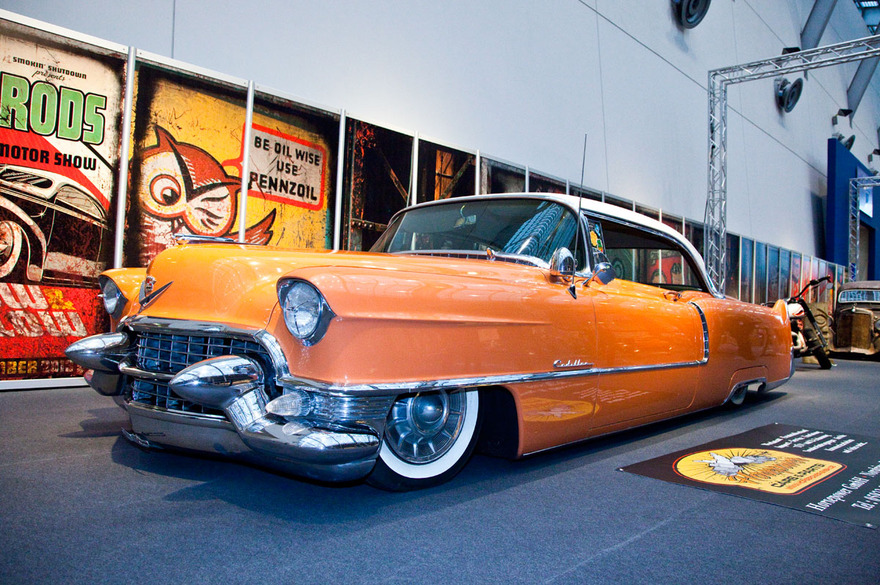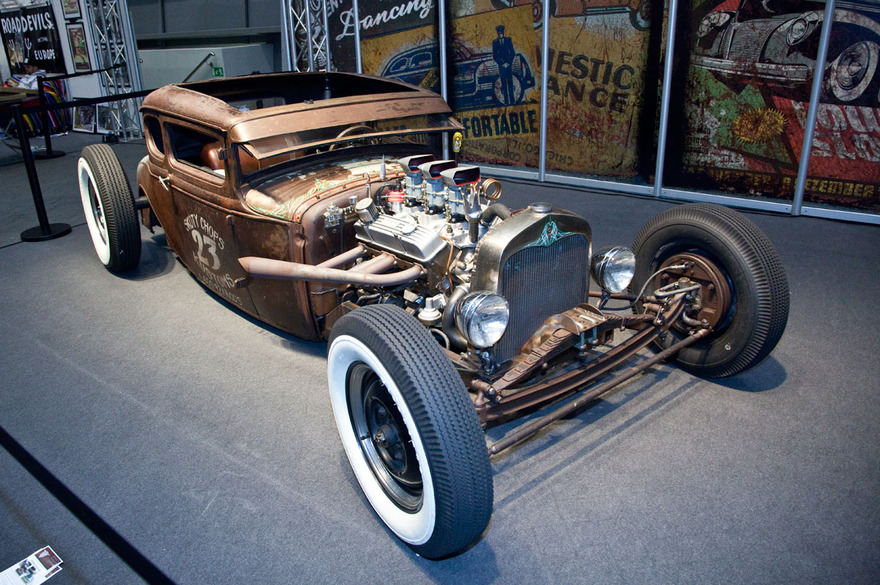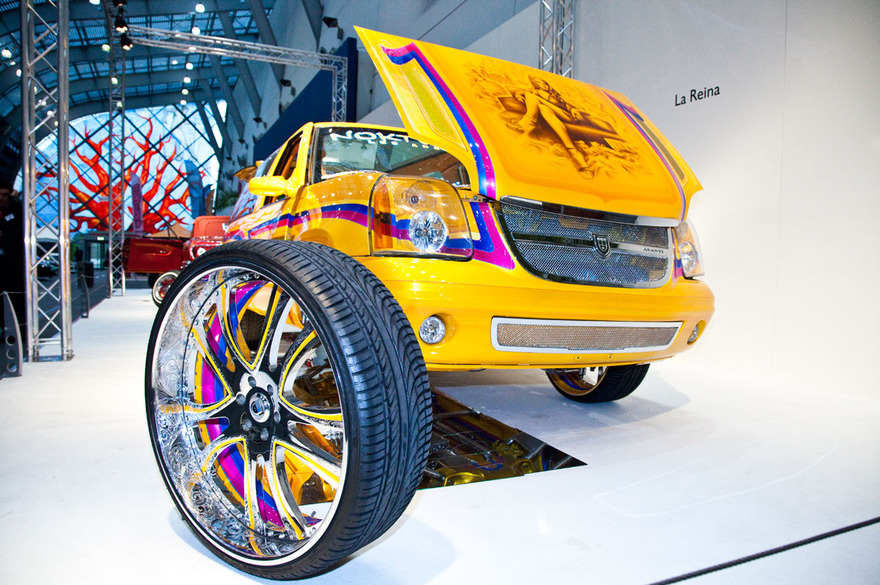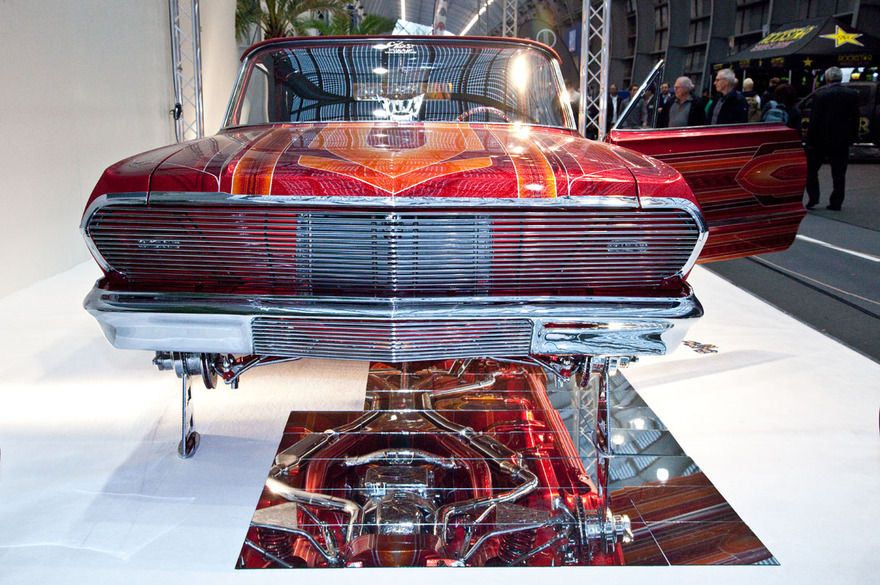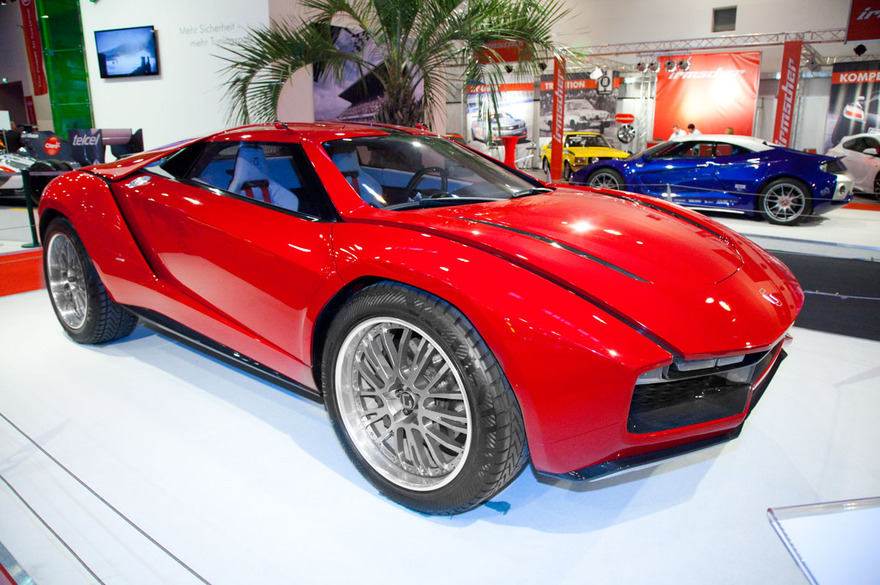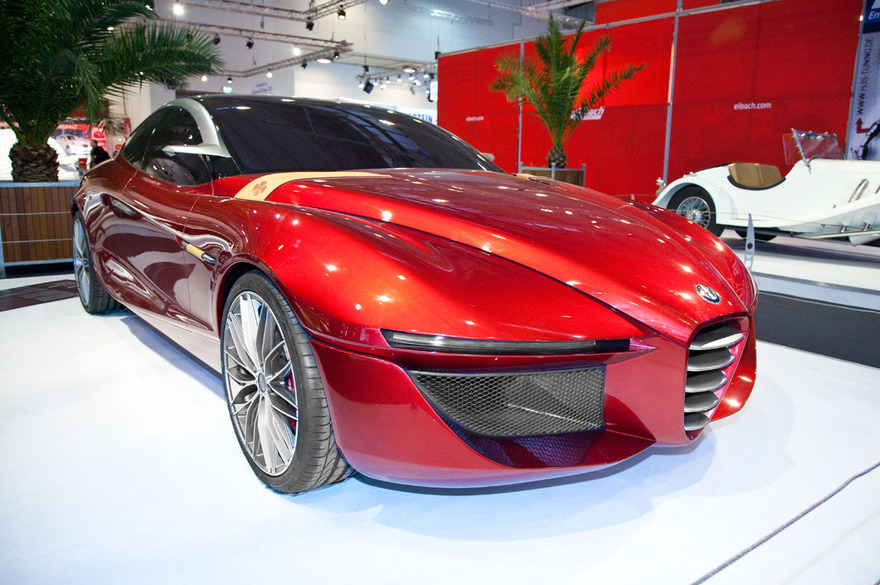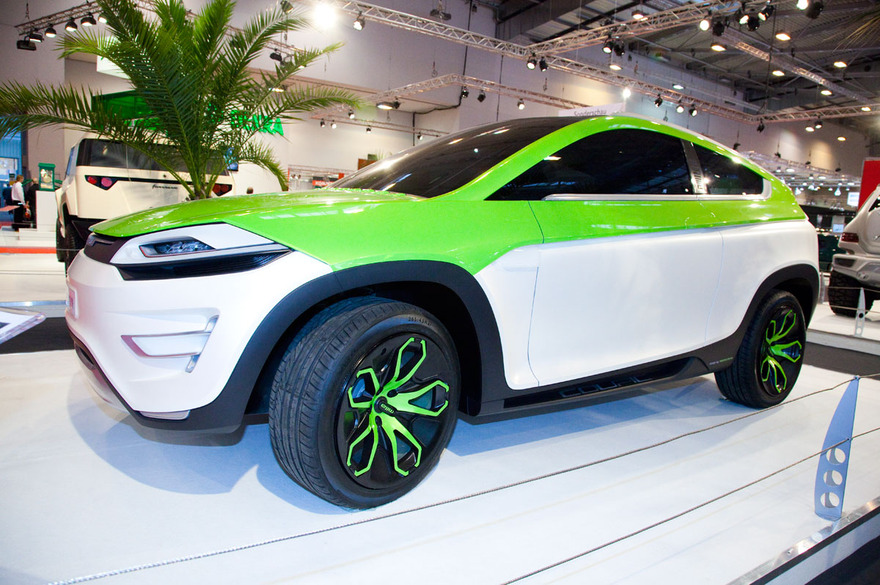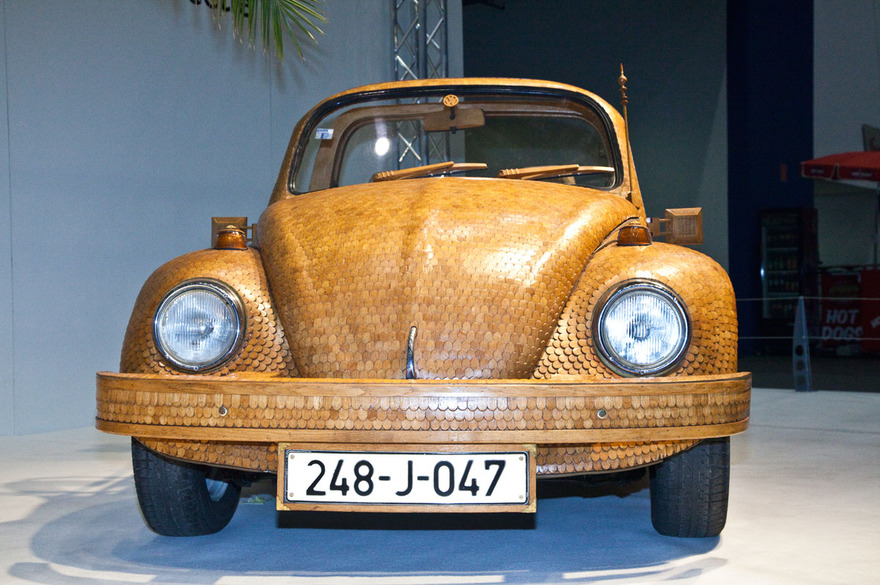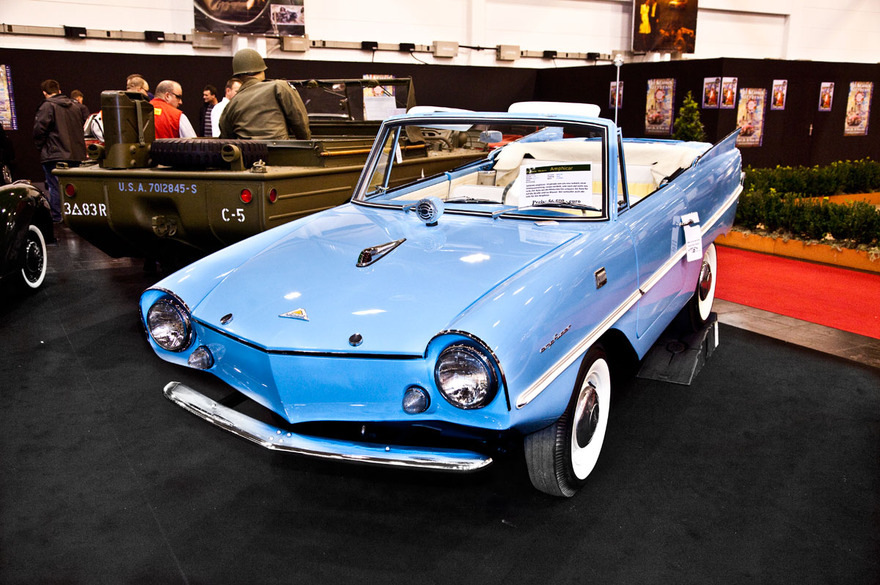For almost half a century a motor show in Essen, where tuning is the major theme, traditionally takes place in the beginning of December. A few years ago the show was in decline together with the whole world in general and car industry in particular. Showrooms were empty and car platforms were replaced by French fries stands for those who took the risk of dropping by. But it seems now like the crisis is over and Essen Motor Show is back to life, readjusted and sparking bright. And now its major theme is not only tuning, but also motor sport.
It’s quite obvious why — not without a reason Germany considers itself to be almost the main homeland of motor sport. And there are good grounds for that: in the first half of XX century it was here where the fastest and most powerful cars were manufactured (one could recall “Silver Arrows” and speed records). Also one of the first race tracks was constructed in Germany as well — in 1927 the famous Nürburgring was built.
SLS AMG GT3 Black Falcon
It has 6.208-litre engine, puts out more than 500 hp, 0 to 100 km/h acceleration in 3.6 sec, top speed — 300 km/h. This car takes part in endurance championships including the 24 hours of Nürburgring 2013 and other 24-hour competitions — in Dubai, Barcelona and Spa Francorchamps.
Essen Motor Show is considered to be one of the largest tuning and motor sport events. But those are not its only themes. A lot of space is taken by historic vehicles, concept cars and even design projects created by students. Both manufacturers and official tuning studios come to this show.
Mercedes-Benz 500 SGS “Gullwing” Produced in 1984. It has a 4.973-litre engine, 231 hp, 0 to 100 km/h in 8.1 sec, top speed — 225 km/h.
One of permanent participants is Brabus tuning studio. Each year it surprises its fans by multicoloured Brabus Smarts
or by much more serious projects like, for instance, this one:
It’s a Brabus 700 created on the base of Mercedes G 63 AMG. It produces 700 hp, its maximum torque is 960 Nm, 0 to 100 km/h acceleration can be reached in 4.9 seconds, top speed — 250 km/h.
This year they celebrated a 30-year anniversary of the famous DTM race championship and Essen Show could not leave this event without attention. A large exposition dedicated to this championship was created. Both historic race cars and contemporary vehicles, which used to have best championship pilots behind their wheels this year, were exhibited there. By the way, a lot of drivers (among them were Mike Rockenfeller, Marco Wittmann and Daniel Juncadella) were invited to the show together with such racing legends as Bernd Schneider and Hans-Joachim Stuck.
Another jubilee was celebrated by the Italian brand Maserati — its 100th anniversary. On this occasion they collected vintage race cars fascinating the audience by their beauty and glare of fame. It’s curious to know that Maserati is one of four car manufacturers which were initially created for car races (the other three are Ferrari, Lotus and McLaren).
Maserati Tipo V4. 4-litre engine, 16 (!) cylinders producing 304 hp. Top speed — 260 km/h. It’s a famous car which managed to set a 10-km distance speed record in 1929 — 246 km/h!
Maserati Tipo 8VRi. 5-litre V8 engine, producing 320 hp. Top speed — 246 km/h.
Vintage beauties were of course making the audience sigh with admiration. But a modern sensation — 2005 Maserati MC12 — standing behind the classic vehicles was also triggering emotions. It’s a two-seat sports car specially created by Maserati on the base of Ferrari Enzo for FIA GT series. Its production was limited to 50 cars. This one in particular costs €749,000. Apart from road-legal versions, a few racing prototypes were also created but the Essen Motor Show did not reveal their price (if there is any).
Not really vintage but artfully aged cars, sometimes looking like metal junk, were part of “Rust Valley” exposition of “rat” cars. Flirty rusty cars were accompanied by similarly rusted benches, bicycles, petrol cans, shovels and other aged objects creating that special rat-style charm.
After Rat Rods there came the Hot Rods which were different from the previous exhibition items only in their age. The first ones looked like plain young-timers but hot rods definitely belonged to old-timers which came from the wonderful epoch of the 50’s and 60’s of the previous century.
1939 Chevy Bomb «La Bombita Juanita» with German residence in the European branch of Road Devils club.
1960 Chevrolet Impala. It’s a classic lowrider with price growing in inverse proportion to the bumper and doorsills clearance. In the beginning of the 50’s the most affordable hydraulic equipment for such cars came from military airplanes left after the World War II.
1930 Ford Model A. It used traditional solutions for hot rods built on the base of classic cars — lowered suspension, clipped roof and open motor. And in this case the car is also fitted with wheels (rims and tires) of the day with obligatory white walls looking like spats on men’s retro-shoes.
The finishing touch to hot rods collection was given by two miracles from South California (SoCal) which is famous for its car projects, and its artists (this word gives the most suitable description of their work) know no equal in creating custom culture objects.
SUV La Reina based on Chevrolet Tahoe is fitted with 8-cylinder 5.7-litre engine. It received the “Truck of the Year” award according to “Lowrider” magazine.
El Rey on the base of 1959 Chevrolet Impala. It is fitted with a 1987 Chevrolet bored small-block with 5.7-litre displacement and outputs 300 hp and also has air-powered elements.
Each year Essen Motor Show has a traditional exhibition of unusual concept cars created by famous designers and engineers. This time they brought almost 20 cars and even one bus produced both by “boutique” studios like Bertone, Giugiaro, Fornasari and large-scale manufacturers like Mercedes, Citroen, Alfa Romeo.
Giugiaro Parcour Coupe. It is fitted with a 5.2-litre 550-hp Lamborghini engine. Its top speed reaches 320 km/h. Another car presented by Giugiaro was Parcour Roadster — same thing but no roof.
IED Alfa Romeo Gloria. This concept car was first revealed at the 2013 Geneva Auto Show and is the very picture of a sports car of the future. The car will be propelled by either petrol or 6-cylinder atmospheric or V8 biturbo engine. It is interesting that this concept car was designed by 20 students involved in this project.
Magna Steyr Mila Coupic. Its designers called this car a mixture of SUV-coupé, pick-up and convertible. It has already been the sixth model in Mila family. It is 4.68 metres long and 1.68 metres wide. Probably, there is no need to introduce Magna Steyr. It’s an engineering company which has been working in the sphere of car manufacturing for 100 years already. Even Ferdinand Porsche was once recruited by this company and arms contracts used to form a considerable part of its income. Apart from engineering services, its major business profile consists of fuel systems, accumulators and batteries, electrical and mechanical roofs. And cars are probably the quintessence of their activity — Magna Steyr combines all their main technologies and developments in them.
A wooden 1975 Volkswagen Beetle. The owners of this car decided to turn it into a convertible and also encrust it with wooden panels. All in all they used 20 thousand of pieces of wood of different shape and size and it took 1.5 years to complete the work. When the owners saw the result of their work, they decided to add similar accessories to their outfit by crafting wooden colonial caps.
But let’s go back to motor sport. The promoters allocated the majority of show rooms for this direction, including hall number 7 which was called Arena. It is equipped with a real (though not very big) track for car tests, tricks performed by drifters and bikers, and also off-road enthusiasts like those demonstrated below, vaguely resembling a trial:
Essen Motor Show also comprises the expositions of large car manufacturers and official tuning studios which come here year after year and even have their own places in the halls assigned for them only to make them easy to find. Also it’s possible to purchase thousands of spare parts for German cars — upper halls look more like a market of used car parts than a motor show — or even purchase a car if you agree on its price with the trader. Some of them are quite rare and unusual:
You can purchase an Amphicar for only €56,500 — it’s a real amphibian which is also very rare — produced in 1964. The car is fitted with a 4-cylinder 1.147-litre engine and its top speed is 104 km/h. Rather curious is the fact that it was the only car produced on the line available for sale. But it had a number of drawbacks: it was expensive, required a yacht driving license and was not intended for use in sea water (due to corrosion).

